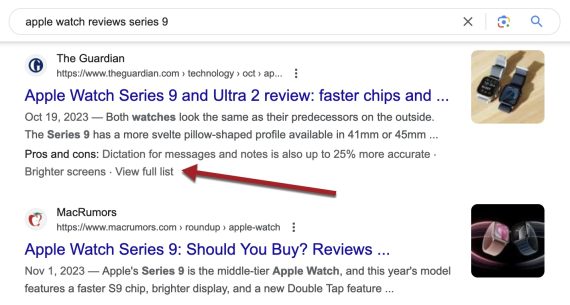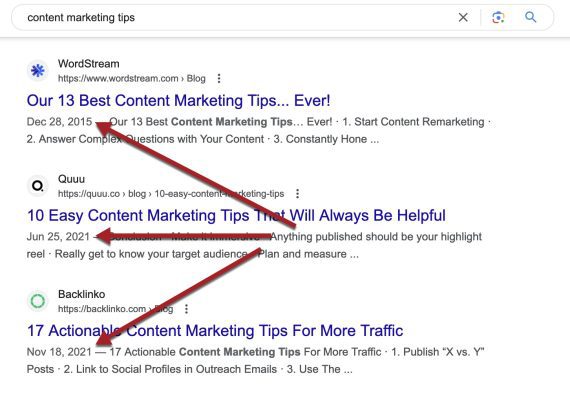Search engine optimization is changing. Generative AI is streamlining many of his SEO-related tasks, and search results pages are evolving. However, businesses with small to medium sized websites and SEO-friendly content management systems or e-commerce platforms can do much of the SEO work in-house.
Here are the top 10 do-it-yourself SEO tips, including relevant ChatGPT prompts.
1. Research keywords
Keyword research has two benefits. First, discovering and organizing relevant search queries reveals the words and phrases consumers use to find your products and services. Sellers can use these keywords in product descriptions, titles, and blog posts, all of which can improve organic search rankings.
Second, knowing how consumers search for wants and needs can reveal your competitors (who are ranking for those keywords) and generate ideas for new or improved products.
There are many free and freemium keyword research tools out there. Organizing keywords based on a common purpose can be time-consuming, but it can be done using a spreadsheet.
ChatGPT can expand your keyword list. The prompt is:
my main terms are [KEYWORD].Generate a list of relevant keywords to grab the attention of strangers [KEYWORD] But it may prove useful. For each relevant keyword, create an article title and an angle that describes how it can help you. Answer in table format.


ChatGPT can expand your keyword list to include potential titles and angles. This example concerns the keyword “P2P loans”. Click on the image to enlarge.
ChatGPT allows you to (i) generate a content strategy based on your keyword list, (ii) identify keywords to include on your pages, and (iii) describe buyer personas for each keyword.
This is my keyword list. [KEYWORD LIST] Create a table that organizes keywords by meaning. For each group, add your target persona and article title. Include the search volume for each keyword in a separate column.


This table from ChatGPT organizes keywords by meaning, persona, article title, and search volume. Click on the image to enlarge.
2. Identify keyword gaps
A keyword gap is a search query that two or more of your competitors rank for, but for which your site does not rank. Premium tools like Ahrefs and Semrush identify missing keywords that represent opportunities for your brand.
The entire analysis takes less than 30 minutes. You have ideas for new content, new pages to create, and information queries to address.
3. Build internal links
Internal links are the key to getting important pages visible in organic search. Google uses the link to crawl his website. Its algorithm assigns fairness to each page based in part on the number of internal and external links pointing to that page.
Google does not provide guidance on internal links or where to place them. But Google officials have hinted at their priorities for years:
- Main navigation.
- In content, such as the body of a blog post.
- footer.
- Above the Fold (top of page).
- Side bar.
Your internal linking strategy should include all of this. Display content widgets such as “Related,” “Top,” and “Popular” to ensure that key pages are linked directly from the main navigation or with just a click or two.
You can also tell ChatGPT to create a list of important pages and turn that list into a set of internal links that you add throughout your site.
This is a list of important URLs, including title tags. [LIST OF URLS, TITLE TAGS] You can create HTML from this list and add it to all your pages to link them together. Don't use the entire title for each link. Please keep it short but easy to understand.
4. Improve click-throughs
Keyword research identifies ranking opportunities, while click-through optimization generates more traffic from existing positions.
Rich snippets stand out in search results and require minimal coding, including Schema.org markup. Third-party plugins make things easier.
Google often enhances search snippets with additional information such as product review snippet comparisons, lists, “pros” and “cons”.


Google often enhances search snippets with additional information such as “pros” and “cons”. This example is for the query “apple watch reviews series 9”. Click on the image to enlarge.
Tailor your content to help Google create more detailed search snippets. ChatGPT helps you:
This is my article list tool. [ARTICLE TEXT] For each tool, add a bulleted list of pros and cons.
Generative AI can also enhance product descriptions with specifications and images.
5. Optimize your title tag
Although title tags are slowly losing their organic ranking power, they are still important. Including keywords in the title tells Google the purpose of the page. Additionally, a well-crafted title can be the most prominent part of a standard search results snippet. Therefore, the title also influences click-throughs.


Title tags are typically the most prominent part of a search result snippet, so they influence click-throughs. Click on the image to enlarge.
ChatGPT can generate attractive title tags.
In this article, we will create 10 title tags and the required H1 heading in a tabular format. [ARTICLE TEXT] Use different engagement strategies (questions, impactful language, etc.). We'll explain how each title and heading can attract more clicks.


ChatGPT can generate title tags, H1 headings, and strategies to improve article rankings. Click on the image to enlarge.
6. Create useful content
Knowing your page's main keywords and including them in the title (or body, if it makes sense) is a key element of optimized content. But the most important strategy is to create information that is truly useful to consumers. It's ultimately impossible to optimize content that no one wants to read or see.
Google now understands searcher intent, content relevance and value. But it all starts with helpful content that serves your target consumers and answers their questions, as revealed by their search queries.
ChatGPT can generate ideas to improve:
This is my article. [ARTICLE TEXT] I want you to be ranked [KEYWORD]. How can I improve my articles? Which personas am I failing to target?
7. Update old content
Most content loses organic traffic over time. Older content will receive fewer clicks primarily due to the date of the search snippet. Additionally, Google strives to show you more fresh content.


Older content will receive fewer clicks primarily due to the date of the search snippet. Click on the image to enlarge.
Updating your content with new information (new references, updated explanations, etc.) can help you recoup much of your losses.
ChatGPT can help. Consider these three prompts:
- This is my article. [ARTICLE TEXT] Generate key points, a FAQ section of 4-6 questions with short answers, and an overview in tabular format.
- Convert this article into a script for podcast narration. [ARTICLE TEXT]
- Below are quotes from experts on the next emerging trends. [MY INDUSTRY]. Generate subheadings and introductions for each citation. [QUOTES]
8. Monitoring the analysis
Two Google tools are important to understanding organic search performance: Analytics and Search Console. These report metrics such as which pages have the most organic traffic, the keywords driving traffic, and the engagement and conversions from that traffic.
At the very least, check your analytics regularly for traffic drops or site glitches. Both require immediate action.
9. Build link equity
Link building is the most difficult task in SEO. The work is never done. Google uses backlinks in part to tell us whether content is trustworthy. For example, links from trusted news sources increase trust.
Fortunately, link building can be done in-house.
The best tactic for building links is to create quality content that people want to share. Increase your sharing by joining niche communities, connecting with like-minded people, and reaching out to journalists.
Never pay for links directly or indirectly through a consultant. If it's easily available, the link may be useless or worse.
ChatGPT can provide link building ideas from the following prompts:
- my business is [PRODUCT DETAILS]. Who and how should you approach to increase brand awareness?
- Which podcasts should you target? Provide an outreach email for each.
10. Educate yourself
Finally, there is no substitute for knowledge. Learn SEO. There are lots of great free resources out there.
Search Engine Roundtable is my favorite source of curated news and advice. Moz's blog is an organized and helpful resource. My weekly column here focuses on e-commerce.
Beyond DIY
All online sellers should perform some level of DIY SEO. Save money and drive traffic. However, some tasks may require professional help. Examples include coding changes, structured data, site speed, etc.


